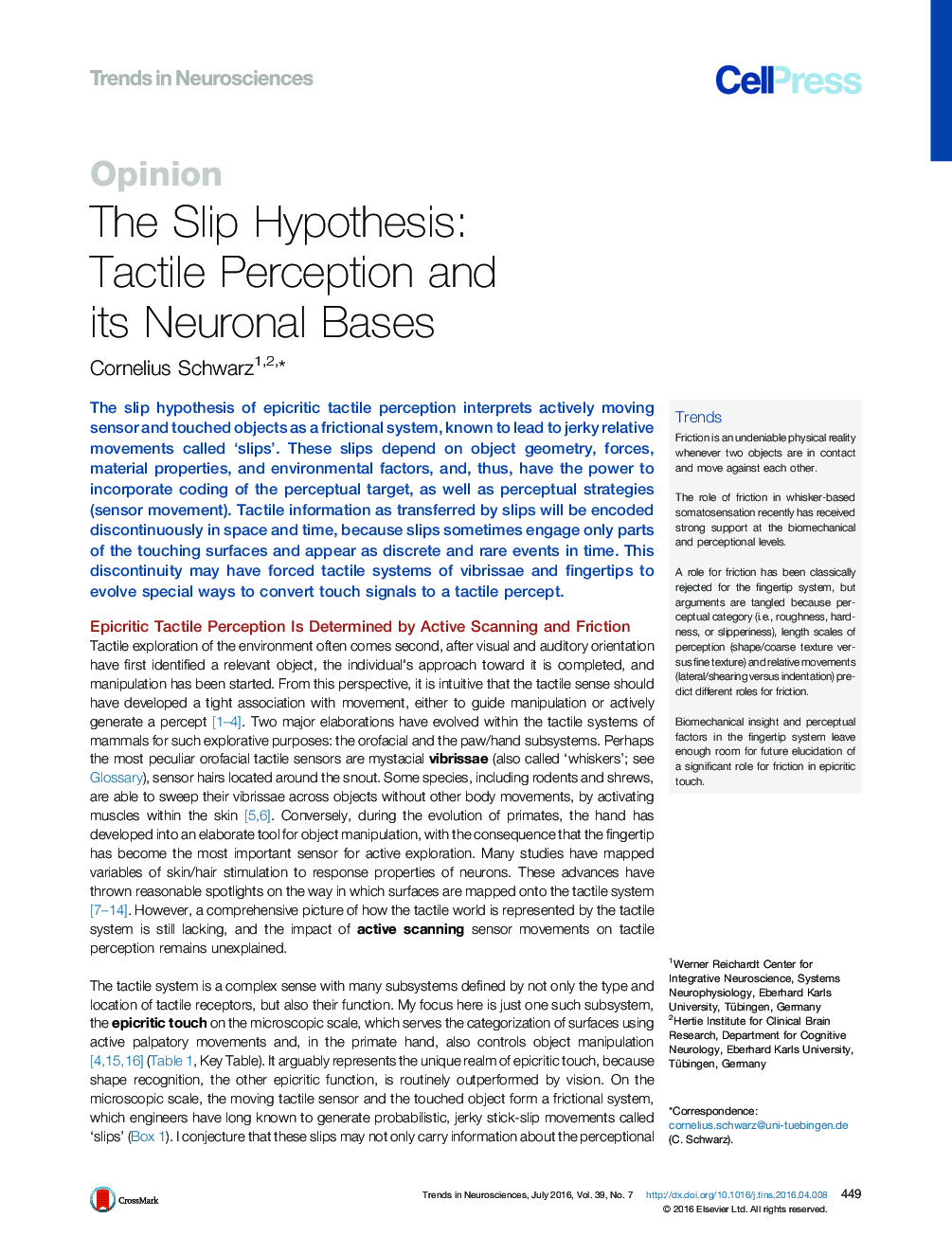| Article ID | Journal | Published Year | Pages | File Type |
|---|---|---|---|---|
| 4354096 | Trends in Neurosciences | 2016 | 14 Pages |
The slip hypothesis of epicritic tactile perception interprets actively moving sensor and touched objects as a frictional system, known to lead to jerky relative movements called ‘slips’. These slips depend on object geometry, forces, material properties, and environmental factors, and, thus, have the power to incorporate coding of the perceptual target, as well as perceptual strategies (sensor movement). Tactile information as transferred by slips will be encoded discontinuously in space and time, because slips sometimes engage only parts of the touching surfaces and appear as discrete and rare events in time. This discontinuity may have forced tactile systems of vibrissae and fingertips to evolve special ways to convert touch signals to a tactile percept.
TrendsFriction is an undeniable physical reality whenever two objects are in contact and move against each other.The role of friction in whisker-based somatosensation recently has received strong support at the biomechanical and perceptional levels.A role for friction has been classically rejected for the fingertip system, but arguments are tangled because perceptual category (i.e., roughness, hardness, or slipperiness), length scales of perception (shape/coarse texture versus fine texture) and relative movements (lateral/shearing versus indentation) predict different roles for friction.Biomechanical insight and perceptual factors in the fingertip system leave enough room for future elucidation of a significant role for friction in epicritic touch.
